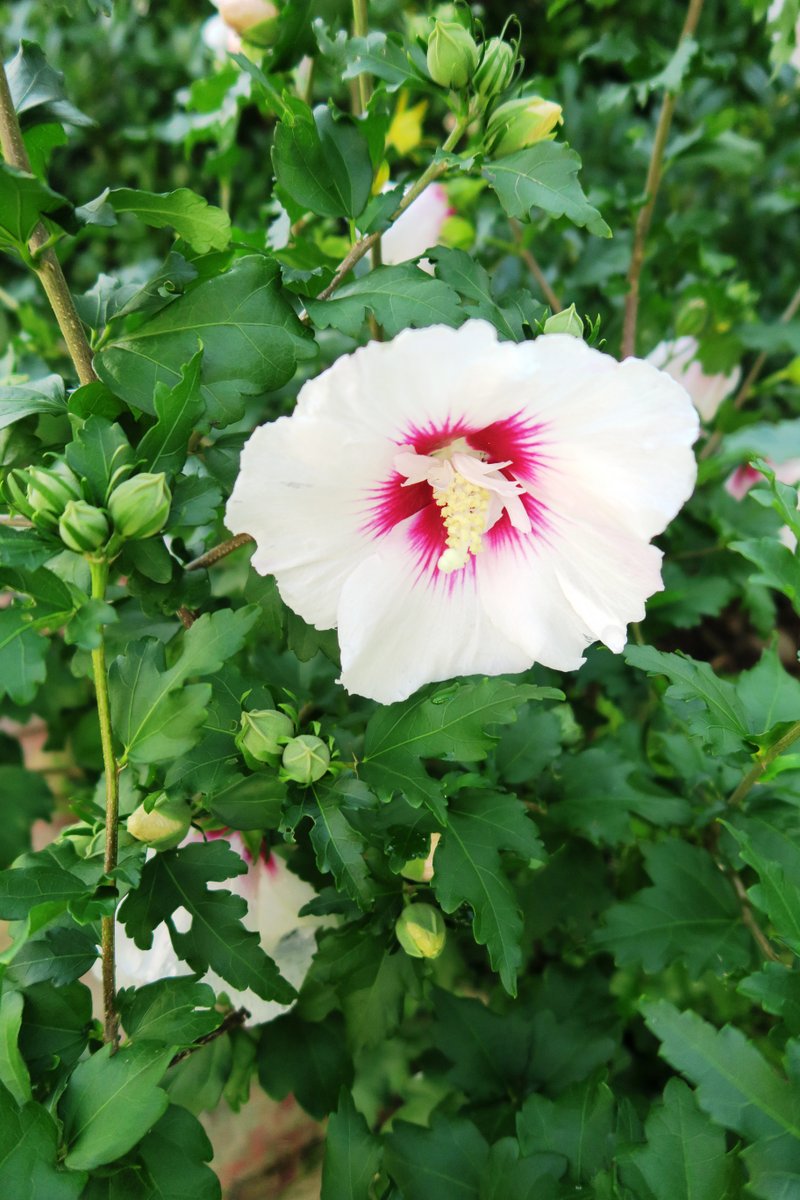THIS MONTH
We have had a taste of hot and dry weather, so watering is of paramount importance this month. From trees and shrubs, to annuals and perennials and fruits and vegetables, water is the most important factor for plant success.
• Drip irrigation is the most efficient way to water, and early morning watering is preferable since water can enter the ground easily and will not be lost to evaporation as quickly as later in the day. However, if late in the day is the only time you can water, do it then. Avoid late evening watering, since moisture on the plants overnight makes them more susceptible to diseases.
• Mulching the ground around the plants will aid in moisture retention, and slow and steady watering aids in good soil moisture saturation.
• Tropical flowers love the hot, humid months of summer and can be a quick splash of color in the garden. From tropical hibiscus in vibrant shades of pink, yellow, orange and red to a variety of pink and red mandevillas, to the deep purple of tibouchina and large, luscious leaves on bananas and elephant ears, there are plenty of ways to add color that can take the heat. New shipments keep appearing at local nurseries, so stop in and see what is available.
• If you need summer annuals, there are plenty of those available too, from lantana and periwinkle to impatiens and coleus. The key is to keep them watered and fertilized. Fertilize regularly to keep them blooming well. It is best to apply frequent, light applications so you don't burn tender plants. Deadhead old blooms if your plants set seeds. You want to produce flowers, not seeds now. The same holds true with long-blooming perennials including rudbeckia (black-eyed Susan), purple coneflower and gaillardia. Cut off the spent
blooms weekly and they should bloom for months.
• Lawns are growing well this summer, especially after the moist spring and early summer we had. Continue to mow weekly. Most lawn grasses benefit from at least one application of fertilizer each year, and some people do apply more frequently, but they also mow more often. Water if conditions get too dry.
IN BLOOM
• Vegetable gardens got a slow start with the cool, wet spring, but they are catching up now. Tomatoes are producing nicely, but some varieties are suffering from blossom-end rot, a condition that is worsened by fluctuating moisture levels and low levels of calcium in the soil. Try to keep the soil evenly moist and mulched. The week of particularly hot and dry weather, followed by the torrential downpour, has many tomato plants suffering from blossom-end rot.
• If you have squash plants that have quit producing or were killed by the squash vine borer, you can replant in that area with summer peas, okra or even pumpkins and winter squash. The key will be to keep the ground watered to get the plants up and growing. Mulching can also help prevent weeds from competing. There are still vegetable and herb transplants available at local nurseries, so if you haven't planted, there is still time.
• Scout your garden frequently looking for pest problems. We have seen aphids, scale, white flies and spider mites, along with stink bugs, caterpillars and more. Know which pests are good and which are bad. If you are trying to attract butterflies, then don't kill the caterpillars that are eating your milkweed or dill. But if tomato hornworms are chomping on your tomatoes or corn earworms are eating your corn, then you may want to control them.
Roses are blooming nicely, and depending on what variety you have, some are disease-free and others aren't. If you are looking for some nonstop color on disease-free plants, try some of the Drift roses, O'so easy, Easy Elegance and David Austin. Make sure they get at least six hours of sun (more is better) and fertilize monthly throughout the growing season.
PLANT OF THE MONTH
Althea, aka Rose of Sharon, can be grown as a small shrub or a large tree. This member of the hibiscus family blooms profusely from early summer through fall. Flowers come in shades of pink, purple, white and salmon. They may have single blooms with one color, or double blooms in single or multiple shades. They bloom most profusely in full sun, but will give you blooms in light shade as well. Prune as much or as little as you would like in late February to early March since these plants bloom on the new-season growth. Old-fashioned varieties can reseed themselves, while new varieties are seedless. Some hot new cultivars include the Chiffon series (Lavender Chiffon, Pink Chiffon and White Chiffon) and the Satin Series in a wide range of single-flowering colors. Althea tends to thrive in average conditions. They don't need excessive fertilizer once established. Very few pest problems attack this plant.
Janet B. Carson is a horticulture specialist for the University of Arkansas Cooperative Extension Service.
HomeStyle on 07/04/2015
